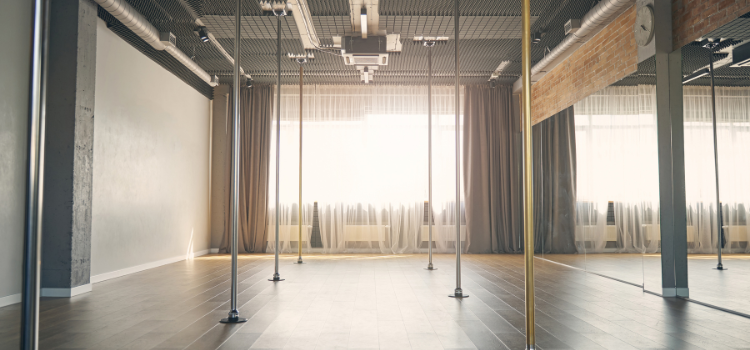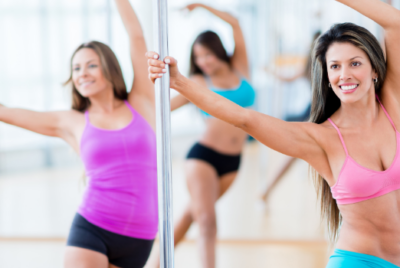Dance Pole Selection: A Guide for Enthusiasts and Beginners
Introduction
As an enthusiast and advisor in the pole dancing niche, I’m excited to share some helpful suggestions about dance poles and reasons to enhance your pole dancing experience. Whether you’re a beginner looking to start your journey or already have some experience, this guide will provide valuable insights into dance poles and how to make the most of them.
Understanding Dance Poles
Before delving into the specifics, let’s take a moment to understand what dance poles are. Dance poles are vertical poles, typically made of materials like stainless steel or brass, used for various forms of pole dancing. They provide stability and support for executing impressive spins, tricks, and aerial manoeuvres.
Choosing the Right Dance Pole
When it comes to choosing the right dance pole for yourself, several factors come into play. Here are some key considerations:
Consider the Dance Pole Material
The material of the pole is crucial as it affects grip and durability. Stainless steel and brass are popular choices, with each offering its own advantages. Stainless steel poles provide excellent grip and are highly durable, while brass poles have a warmer feel and can be beneficial for individuals with sweaty hands.
Determine the Diameter
The diameter of the pole should be chosen based on your hand size and strength. Most dance poles come in 45mm and 50mm diameters, with 45mm being the standard size for most pole dancers. However, those with smaller hands may find 40mm poles more comfortable, while individuals with larger hands might prefer 50mm poles for better grip.
Check the Weight Capacity
Ensuring that the dance pole can support your weight is essential for safety. Different poles have varying weight capacities, so be sure to check the manufacturer’s guidelines. It’s advisable to select a pole with a weight capacity that exceeds your own weight to ensure stability and minimise the risk of injury.
Decide on a Static or Spinning Dance Pole
Another decision to make is whether you want a static pole or a spinning pole. Static poles are fixed and do not rotate, providing stability for beginners and allowing them to focus on building strength and learning basic moves. On the other hand, spinning poles rotate, adding an extra dynamic to your routines and enabling fluid spins and advanced tricks. Most poles have the capability to be set up in static or spinning mode. Consider your skill level and preferences when choosing between static and spinning options.
Setting Up Your Dance Pole
Once you’ve selected the perfect dance pole, it’s time to set it up in your space. Here are some steps to follow:
Selecting the Right Location for your Dance Pole
Choose a location with enough space for your pole and adequate clearance around it. Ideally, find a spot with a sturdy floor and a ceiling that can support the weight of the pole. Consider placing the pole near a mirror to help with technique and form.
Ensuring Stability and Safety
Before installing the dance pole, ensure that the floor is clean and free of any moisture or debris that may affect grip. If you have carpeted floors, it’s recommended to place a dance pole platform or a stage to provide a stable surface. Additionally, make sure to tighten all screws and fittings securely to avoid any wobbling or accidents during your practice sessions.
Adjusting the Height of a Dance Pole
The height of your dance pole plays a crucial role in your comfort and safety. Ideally, the pole should be installed at a height that allows you to reach it with your arm extended overhead. However, adjust the height based on your preferences and the type of moves you intend to practice. Keep in mind that as you progress, you might want to change the height to challenge yourself with new tricks.
Essential Accessories for Using your Dance Pole
To enhance your pole dancing experience and ensure safety, consider investing in the following accessories:
Grip Aids
Grip aids such as liquid chalk, grip gloves, or grip-enhancing powders can significantly improve your grip on the pole. They help reduce hand sweat and increase friction, allowing you to maintain a secure hold during spins and tricks. Experiment with different grip aids to find the one that works best for you.
Crash Mats
When attempting more advanced moves or practicing new tricks, having a crash mat provides an added layer of safety. Crash mats cushion your falls and reduce the risk of injury. Place the mat strategically beneath the pole to protect yourself in case of a slip or loss of grip.
Clothing and Footwear
Choose pole clothing that allows your skin to grip the pole effectively. Opt for shorts, sports bras, or tank tops to expose your skin and aid in grip. Avoid wearing clothes with zippers, buttons, or any embellishments that could damage the pole’s surface. Additionally, consider investing in pole-specific shoes or barefoot training, depending on your preference and the type of dance style you’re pursuing.
Personal Hygiene Products
Maintaining good personal hygiene is crucial when engaging in pole dancing. Keep a towel nearby to wipe away sweat and regularly wash your hands to remove any grip aids or residue that may affect your grip. Additionally, consider using a grip-enhancing product to remove any excess oils from your skin before practicing.
Preparing Your Body for your Dance Pole
To maximise your performance and prevent injuries, it’s important to prepare your body through warm-up exercises, strengthening and conditioning, and flexibility training.
Warm-up Exercises
Before every pole dancing session, warm up your body to increase blood flow, loosen up your muscles, and prevent strains or pulls. Engage in activities like jogging in place, arm circles, leg swings, and gentle stretches that target your major muscle groups.
Strengthening and Conditioning
Building strength and conditioning your body is essential for pole dancing. Focus on exercises that target your core, arms, back, and legs. Incorporate exercises like planks, push-ups, pull-ups, squats, lunges, and shoulder presses into your routine. By strengthening these areas, you’ll improve your ability to execute moves and maintain control on the pole.
Flexibility Training
Flexibility plays a significant role in pole dancing, allowing you to achieve graceful lines and execute more advanced moves. Incorporate stretching exercises into your routine to improve flexibility in your shoulders, back, hips, and legs. Practice moves like splits, backbends, bridges, and shoulder stretches to increase your range of motion and prevent injuries.
Tips for Improving Pole Dancing Skills
To continuously improve your pole dancing skills and make the most of your practice sessions, consider the following tips:
Consistency and Practice
Consistency is key when it comes to pole dancing. Set aside regular practice sessions and commit to them. Even short practice sessions can be effective as long as you stay consistent. Repetition and practice will help you build strength, improve technique, and gain confidence on the pole.
Seeking Professional Instruction
Consider taking pole dancing classes or workshops taught by professional instructors. They can provide guidance, correct your form, and teach you new moves and techniques. Learning from experienced instructors ensures that you learn proper form, reduce the risk of injury, and progress effectively.
Exploring Online Tutorials and Communities
In addition to formal classes, explore online tutorials and pole dancing communities. There are numerous video tutorials available that can help you learn new moves, gain inspiration, and connect with other pole enthusiasts. Engaging with online communities can provide a supportive network of fellow dancers who can share tips, advice, and encouragement.
Listening to Your Body and Avoiding Overexertion
Pole dancing can be physically demanding, so it’s crucial to listen to your body and avoid overexertion. Pay attention to any discomfort or pain and take breaks when needed. Gradually progress to more challenging moves and techniques, ensuring that your body is adequately prepared and conditioned.
Conclusion
In conclusion, pole dancing is a captivating and empowering form of exercise and self-expression. By choosing the right dance pole, setting up your practice space correctly, investing in essential accessories, and preparing your body through warm-up exercises, strengthening, and flexibility training, you can enjoy a fulfilling pole dancing journey.
Start with basic moves and as you gain proficiency, challenge yourself with intermediate moves. Remember to practice consistently, seek professional instruction, explore online resources, and prioritise your safety and well-being.
Embark on this exciting pole dancing adventure, embrace the learning process, and celebrate your progress. Get ready to soar, spin, and dance your way to new heights of strength, flexibility, and self-confidence!
Remember, pole dancing is not just about the physical aspects; it’s a journey of self-discovery, self-expression, and personal growth. Embrace the art, enjoy the process, and let pole dancing take you on an incredible adventure of strength, grace, and empowerment.
Now, go grab that dance pole, unleash your inner dancer, and soar to new heights of self-confidence and creativity!
FAQs (Frequently Asked Questions)
Q1: Do I need any prior dance or fitness experience to start pole dancing?
A1: No, prior dance or fitness experience is necessary to begin pole dancing. Pole dancing is accessible to beginners and can be adapted to various fitness levels.
Q2: Can I install a dance pole at home?
A2: Yes, you can install a dance pole at home as long as you have a suitable space with the necessary stability and clearance. Follow the manufacturer’s instructions and ensure proper installation for safety.
Q3: How long does it take to learn advanced pole dancing moves?
A3: The time it takes to learn advanced pole dancing moves varies depending on individual factors such as dedication, practice frequency, natural abilities, and previous dance or fitness experience. It can take several months to years of consistent practice to master advanced moves. Remember that pole dancing is a journey, and progress should be celebrated at every stage.
Q4: What should I expect from my first pole dancing class?
A4: In your first pole dancing class, you can expect to learn basic moves, warm-up exercises, and proper pole grips. The instructor will guide you through the fundamentals and ensure your safety. Be prepared to challenge yourself physically and mentally while having fun and connecting with a supportive community.
Q5: Can pole dancing be a professional career?
A5: Yes, pole dancing has evolved as a professional art form and competitive sport. Many skilled pole dancers perform in shows, competitions, and even pursue teaching careers. However, it requires dedication, training, and continuous development of skills to establish a professional career in the pole dancing industry.




